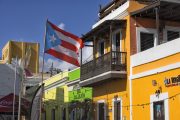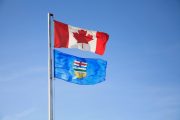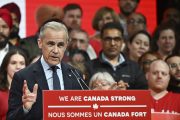Heralded as a “big win” for President Trump, the newly negotiated NAFTA replacement, the United States-Mexico-Canada Agreement (USMCA) appears to have all the earmarks of Obama-era trade agreements, as former Obama officials see stark similarities.
“Throughout the campaign I promised to renegotiate NAFTA, and today we have kept that promise,” Trump said from the Rose Garden on Monday, as he spoke about the “incredible new U.S.-Mexico-Canada agreement called USMCA.”
Unbeknownst to most of Trump’s base and strongest supporters is that much of the USMCA’s text is virtually identical to that of President Obama’s Trans-Pacific Partnership (TPP) — a “free trade” agreement negotiated among 12 Pacific Rim nations (Australia, Brunei, Canada, Chile, Japan, Malaysia, Mexico, New Zealand, Peru, Singapore, the United States, and Vietnam) and at the time representing 40 percent of world GDP.
During the 2016 presidential elections, Trump staunchly opposed TPP, making it the centerpiece of his belief in “Americanism, not globalism.” Much like how NAFTA was a beachhead for globalism, the USMCA does not disappoint globalists.
It’s important to remember that Trump did not personally negotiate the USMCA, nor did he pen any portions of the document. Trump’s lead NAFTA/USMCA negotiator was U.S. Trade Representative Robert Lighthizer, who’s been a longtime member of the globalist, one world government-building Council on Foreign Relations, and who previously applauded the Obama administration’s TPP agreement.In addition to Lighthizer, another of Trump’s negotiators was his son-in-law Jared Kushner, who has had business ties with the Deep State, including Goldman Sachs and George Soros.
In addition to Lighthizer and Kushner, many of the negotiators working within both the State Department and USTR Office are career diplomats and employees, having also worked in the previous Obama administration.
According to the Huffington Post, “At least half of the men and women standing behind Trump during his Rose Garden ceremony praising the new deal were the same career service staff who negotiated nearly identical provisions in TPP, which Trump had railed against.”
Trevor Kincaid, the USTR spokesman for the Obama administration, told the Post that it’s the same USTR team that worked under Obama. “Ironically, he called them horrible negotiators when running for office,” Kincaid said, later adding, “It’s really the same with a new name. It’s basically the ‘22 Jump Street’ of trade deals.”
“New” NAFTA Revision or Copy Cat TPP?
Appearing on CNBC’s Squawk Box, former U.S. Ambassador to Canada Bruce Heyman praised the USMCA.
“It’s obviously welcome news. This is welcome news for North America; it’s welcome news for the markets obviously this morning.”
Heyman — a Democrat, former Goldman Sachs vice president, and board member for the pro-one world government Chicago Council on Global Affairs — was appointed U.S. ambassador to Canada by President Obama in 2013. Upon his Senate confirmation in 2014, Heyman served in the capacity as ambassador to Canada for the duration of Obama’s term.
The night the text of USMCA was released on the USTR website, Heyman reviewed various portions and chapters of the agreement, only to discover that they were identical to those in the TPP. Ironically, Trump has repeatedly lambasted the TPP as the worst trade deal ever negotiated. “[From] some of the reads I got over night, two-thirds of this agreement is essentially going back to TPP,” Heyman said. “All they did was take so much of the language of TPP and implement it here, as it pertains to Canada.”
Speaking on the same program, Fordham Law Professor Matthew Gold explained how Trump’s “big win” in regards to the USMCA/NAFTA renegotiations with Canada comes directly from the TPP. “He got a large number of small updates most of which were in the TPP agreement, which he pulled out of. He got us back to a small increased access in the Canadian dairy market, almost all of which was in the TPP,” Gold said.
Trump’s “big win” in gaining limited access to the Canadian dairy market would have already been achieved by Obama and his team of negotiators had the sovereignty-destroying trans-Pacific agreement been approved by Congress. Now those same provisions have found themselves in yet another sovereignty-killing arrangement. In the first case, TPP was rejected because of the ends didn’t justify the means; in the case of the USMCA, they are being celebrated.
Gold currently teaches international trade law at Fordham University School of Law. According to his bio, on the Fordham University website, Gold served in the Obama administration as a leading figure on North American affairs and was involved in the TPP negotiations:
Professor Gold previously held an appointment within the Executive Office of the President as the Deputy Assistant U.S. Trade Representative for North America, in which he was the United States’ lead negotiator and policy advisor focused on North American trade. In that capacity, he was a trade advisor to the President for the North American Leaders Summit, and […] was a participant in the talks that brought Canada and Mexico into the Trans-Pacific Partnership negotiations.
Gold is correct: A side-by-side comparison of the USMCA and the TPP shows extensive overlap. Virtually, all of the problems inherent with the TPP are likewise contained in the USMCA, such as the erosion of national sovereignty, submission to a new global governance authority, the unrestricted movement of foreign nationals, workers rights to collective bargaining, and regional measures to combat climate change. In fact, according to Roll Call, USTR Lighthizer admittedly said that the USMCA is “built on” many aspects of the TPP.
USMCA; basis for a new TPP?
Instead of calling it the USMCA, the new agreement could have easily been called the “TPP group of three” (TPP-3), with United States, Mexico, and Canada as the three. In fact, Jared Bernstein, formerly Vice President Joe Biden’s top economic adviser, told the Huffington Post, “It’s not the slightest bit credible to argue that NAFTA or TPP were massive disasters but that USMCA is perfection.”
Following the release of the USMCA, Richard N. Haass, president of the Council on Foreign Relations, tweeted his praise for the agreement and aspirations that it would be the basis for future U.S. participation in the TPP. “The USMCA looks to be the trade pact formerly known as NAFTA plus 10-20%. Hope it becomes a precedent for TPP. I suggest the US-Pacific Trade Agreement (USPTA),” Haass said on Twitter. Adding, “What matters is that the US joins it; doing so would bolster our strategic position vis-a-vis China and our economy.”
The next day, Haass again took to Twitter, where he reiterated his renewed hope of the U.S. rejoining TPP; Haass tweeted:
USMCA is NAFTA plus TPP plus a few tweaks. Whatever…if @realDonaldTrump and the Congress are now prepared to embrace a pro-trade agenda, it is all to the good. Ideally, US participation in TPP by another name would be next; failing that, a US-Japan FTA would be second best.
The only major differences between the TPP and the USMCA are its geographic scope and accession chapter. Unlike the TPP, which allowed for the accession of new member countries — requiring only the approval of the TPP Commission, rather than the governments of each country deciding — the USMCA does not appear to include a provision for adding new members to the agreement.
However, considering how much of its text is taken straight out of the TPP and how both Mexico and Canada are TPP members, the USMCA may serve as the basis for rejoining the TPP or at the very least as a potential backdoor for U.S. entry into the Pacific Rim agreement that Trump withdrew from.
Backdoor Entry to TPP
Moving beyond NAFTA and the USMCA, Lighthizer wants to negotiate new bilateral free-trade agreements with the United Kingdom, Japan, India, Colombia, the Philippines, Vietnam, and additional countries in sub-Saharan Africa. Two of those (Japan and Vietnam) are also in the TPP (renamed the CPTPP for Comprehensive and Progressive Agreement for Trans-Pacific Partnership), with Japan having ratified it on July 6, 2018.
Colombia, with whom the United States has a trade promotion agreement, reportedly “tops a list of Latin American deals the Trump administration plans to re-open,” according to Inside Trade. On October 2, 2017, Lighthizer said that once the “NAFTA problem” is resolved the United States would be able to shift its focus to modernizing its trade agreements with countries in Central and South America, such as Colombia.
On June 15, 2018, Mexico’s economy minister, Ildefonso Guajardo, told reporters at a news conference that Colombia had formally requested to join the CPTPP. Colombia is expected to be among the first countries to begin accession talks in 2019.
Mexico was the first to ratify the CPTPP, ratifying it on June 28, 2018. And the United States already has bilateral trade agreements with other TPP countries: Australia, Chile, Peru, and Singapore — the third country to ratify the CPTPP on July 19, 2018.
In August 2018, South Korea, with whom the United States also a free trade agreement (KORUS, the Korea-United States Free Trade Agreement), announced its decision to join the CPTPP. On July 19, 2018, negotiators from the 11 CPTPP countries agreed to start accession talks for new members in 2019, when the agreement is scheduled to go into effect.
Despite President Trump’s executive action to pull out of the TPP, his trade representative Robert Lighthizer appears to be rebuilding U.S. participation in the Trans-Pacific Partnership by piecemeal. And considering how much of the USMCA’s text is taken almost word-for-word from the TPP agreement, Lighthizer and his team of negotiators and career diplomats within the USTR office and State Department are making it easy for a future Deep State president to officially and seamlessly rejoin the U.S. back into the greater Pacific Rim TPP trade order and further subsume American sovereignty in the process.
Photo: Clipart.com






